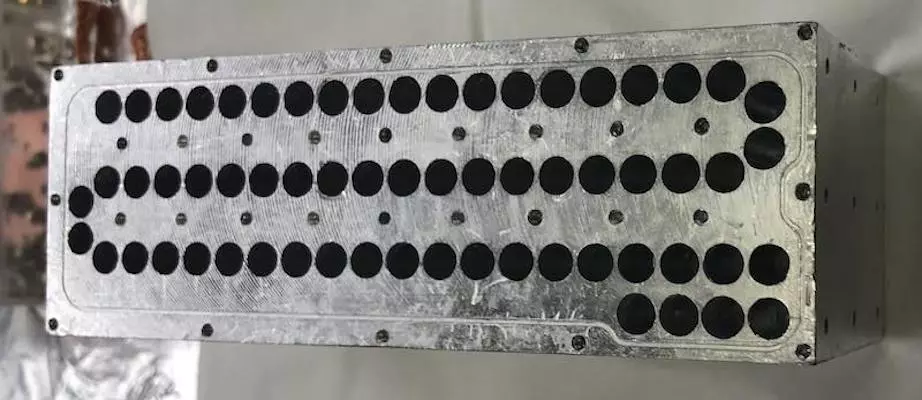Scientists have created a “quantum flute” that can coax photons to move in sync and interact with each other, which they almost never do in nature. The device could help improve future quantum computer designs.
Like its namesake musical instrument, the team’s quantum flute is a piece of metal with a long cavity in the middle accessed by a series of holes from the surface. But rather than sound waves, this device is designed for light.
“Just like in the musical instrument, you can send one or several wavelengths of photons across the whole thing, and each wavelength creates a ‘note’ that can be used to encode quantum information,” said David Schuster, lead author of the study.
These different notes, the team says, could work like quantum bits (qubits) of data, meaning they could be used to create new types of memory for quantum computers, or help correct the errors that this technology is prone to. In their experiments with the device, the researchers were able to control the interactions of up to five notes, or qubits, at once, using a superconducting electrical circuit as a master qubit. That shows that if the system was scaled up, it could greatly simplify how future quantum computers could be controlled.
“If you wanted to build a quantum computer with 1,000 bits and you could control all of them through a single bit, that would be incredibly valuable,” said Schuster.

But maybe the weirdest thing about this quantum flute is that it works by manipulating the photons to do things they rarely do in nature. These particles of light normally don’t interact with one another, meaning they whiz right past or even through each other. Under certain conditions, they can occasionally be made to interact in pairs, but in the new device, the team managed to get all the photons interacting with each other at once, after the energy in the system hits a tipping point.
“Normally, most particle interactions are one-on-one – two particles bouncing or attracting each other,” said Schuster. “If you add a third, they’re usually still interacting sequentially with one or the other. But this system has them all interacting at the same time.”
Along with advancing quantum computers, the team says this unusual group behavior could unlock new ways to study physics and other quantum phenomena that may not have been observed before.
The research was published in two papers, in the journals Physical Review Letters and Nature Physics.
Source: University of Chicago




